*NURSING > EXAM REVIEW > Chapter 06: Legal and Ethical Considerations Halter: Varcarolis’ Foundations of Psychiatric Mental (All)
Chapter 06: Legal and Ethical Considerations Halter: Varcarolis’ Foundations of Psychiatric Mental Health Nursing: A Clinical Approach, 8th Edition (All correct Responces)
Document Content and Description Below
Chapter 06: Legal and Ethical Considerations Halter: Varcarolis’ Foundations of Psychiatric Mental Health Nursing: A Clinical Approach, 8th Edition MULTIPLE CHOICE 1. Which action by a psychiatr... ic nurse best applies the ethical principle of autonomy? a. Exploring alternative solutions with the patient, who then makes a choice. b. Suggesting that two patients who were fighting be restricted to the unit. c. Intervening when a self-mutilating patient attempts to harm self. d. Staying with a patient demonstrating a high level of anxiety. ANS: A Autonomy is the right to self-determination, that is, to make one‘s own decisions. By exploring alternatives with the patient, the patient is better equipped to make an informed, autonomous decision. The distracters demonstrate beneficence, fidelity, and justice. PTS: 1 DIF: Cognitive Level: Apply (Application) REF: Pages 6-3, 4 TOP: Nursing Process: Evaluation MSC: Client Needs: Safe, Effective Care Environment 74 2. A nurse finds a psychiatric advance directive in the medical record of a patient currently experiencing psychosis. The directive was executed during a period when the patient was stable and competent. The nurse should a. review the directive with the patient to ensure it is current. b. ensure that the directive is respected in treatment planning. c. consider the directive only if there is a cardiac or respiratory arrest. d. encourage the patient to revise the directive in light of the current health problem. ANS: B The nurse has an obligation to honor the right to self-determination. An advanced psychiatric directive supports that goal. Since the patient is currently psychotic, the terms of the directive now apply. PTS: 1 DIF: Cognitive Level: Apply (Application) REF: Page 6-16 TOP: Nursing Process: Implementation MSC: Client Needs: Safe, Effective Care Environment 3. Two hospitalized patients fight whenever they are together. During a team meeting, a nurse asserts that safety is of paramount importance, so treatment plans should call for both patients to be secluded to keep them from injuring each other. This assertion a. reinforces the autonomy of the two patients. b. violates the civil rights of both patients. c. represents the intentional tort of battery. d. correctly places emphasis on safety. ANS: B Patients have a right to treatment in the least restrictive setting. Safety is important, but less restrictive measures should be tried first. Unnecessary seclusion may result in a charge of false imprisonment. Seclusion violates the patient‘s autonomy. The principle by which the nurse is motivated is beneficence, not justice. The tort represented is false imprisonment. PTS: 1 DIF: Cognitive Level: Apply (Application) REF: Pages 6-16 to 18, 53 (Table 6-3) TOP: Nursing Process: Planning MSC: Client Needs: Safe, Effective Care Environment 4. In a team meeting a nurse says, ―I‘m concerned about whether we are behaving ethically by using restraint to prevent one patient from self-mutilation, while the care plan for another selfmutilating patient requires one-on-one supervision.‖ Which ethical principle most clearly applies to this situation? a. Beneficence b. Autonomy c. Fidelity d. Justice ANS: D 75 The nurse is concerned about justice, that is, fair distribution of care, which includes treatment with the least restrictive methods for both patients. Beneficence means promoting the good of others. Autonomy is the right to make one‘s own decisions. Fidelity is the observance of loyalty and commitment to the patient. PTS: 1 DIF: Cognitive Level: Understand (Comprehension) REF: Page 6-3 TOP: Nursing Process: Planning MSC: Client Needs: Safe, Effective Care Environment 5. Select the example of a tort. a. The plan of care for a patient is not completed within 24 hours of the patient‘s admission. b. A nurse gives a prn dose of an antipsychotic drug to an agitated patient because the unit is short-staffed. c. An advanced practice nurse recommends hospitalization for a patient who is dangerous to self and others. d. A patient‘s admission status changed from involuntary to voluntary after the patient‘s hallucinations subside. ANS: B A tort is a civil wrong against a person that violates his or her rights. Giving unnecessary medication for the convenience of staff controls behavior in a manner similar to secluding a patient; thus, false imprisonment is a possible charge. The other options do not exemplify torts. PTS: 1 DIF: Cognitive Level: Understand (Comprehension) REF: Pages 6-26, 27 TOP: Nursing Process: Evaluation MSC: Client Needs: Safe, Effective Care Environment 6. What is the legal significance of a nurse‘s action when a patient verbally refuses medication and the nurse gives the medication over the patient‘s objection? The nurse a. has been negligent. b. committed malpractice. c. fulfilled the standard of care. d. can be charged with battery. ANS: D Battery is an intentional tort in which one individual violates the rights of another through touching without consent. Forcing a patient to take medication after the medication was refused constitutes battery. The charge of battery can be brought against the nurse. The medication may not necessarily harm the patient; harm is a component of malpractice. PTS: 1 DIF: Cognitive Level: Understand (Comprehension) REF: Pages 6-27, 53 (Table 6-3) TOP: Nursing Process: Evaluation MSC: Client Needs: Safe, Effective Care Environment [Show More]
Last updated: 1 year ago
Preview 1 out of 13 pages
.png)
Reviews( 0 )
Document information
Connected school, study & course
About the document
Uploaded On
May 04, 2021
Number of pages
13
Written in
Additional information
This document has been written for:
Uploaded
May 04, 2021
Downloads
0
Views
47
.png)

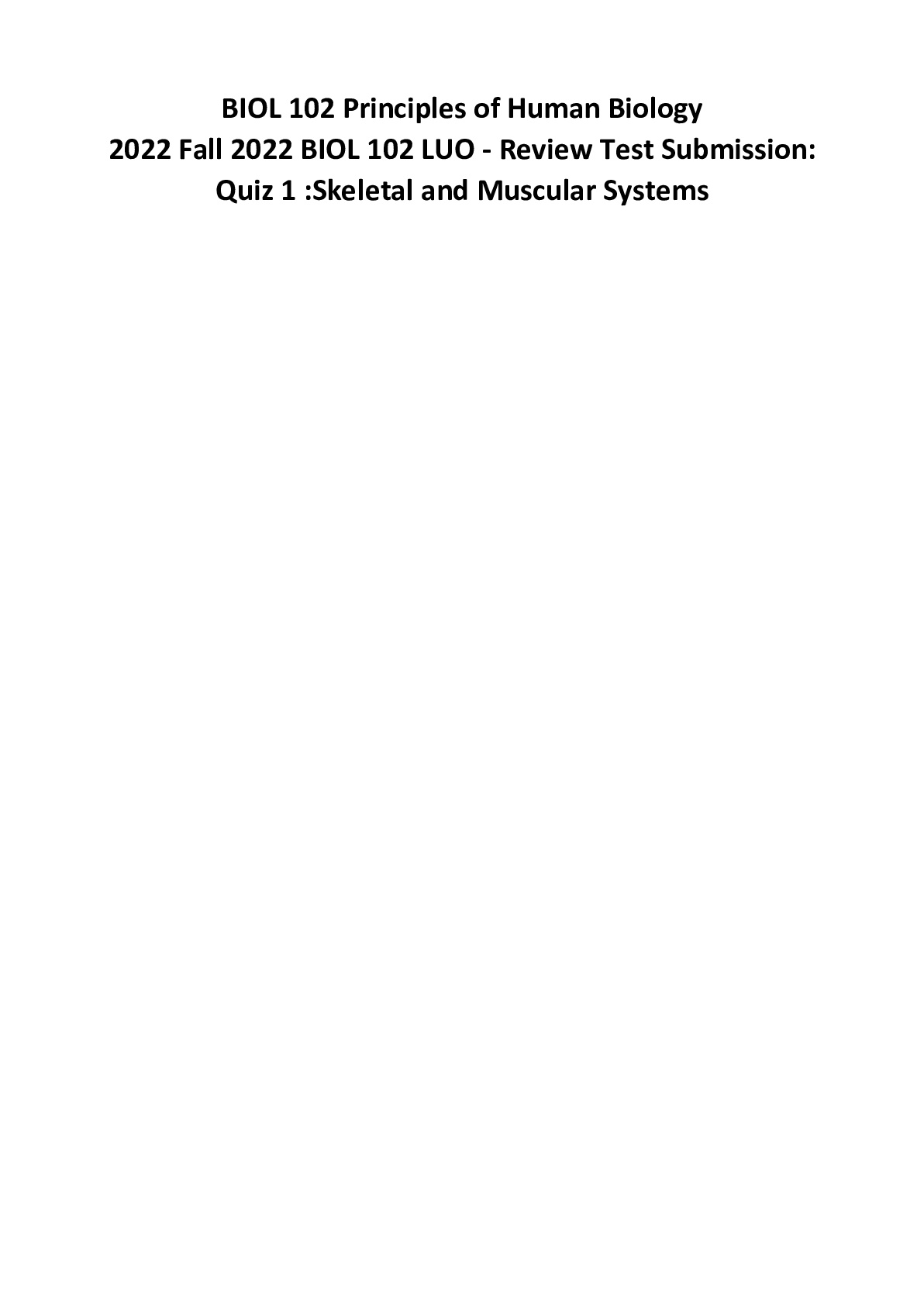
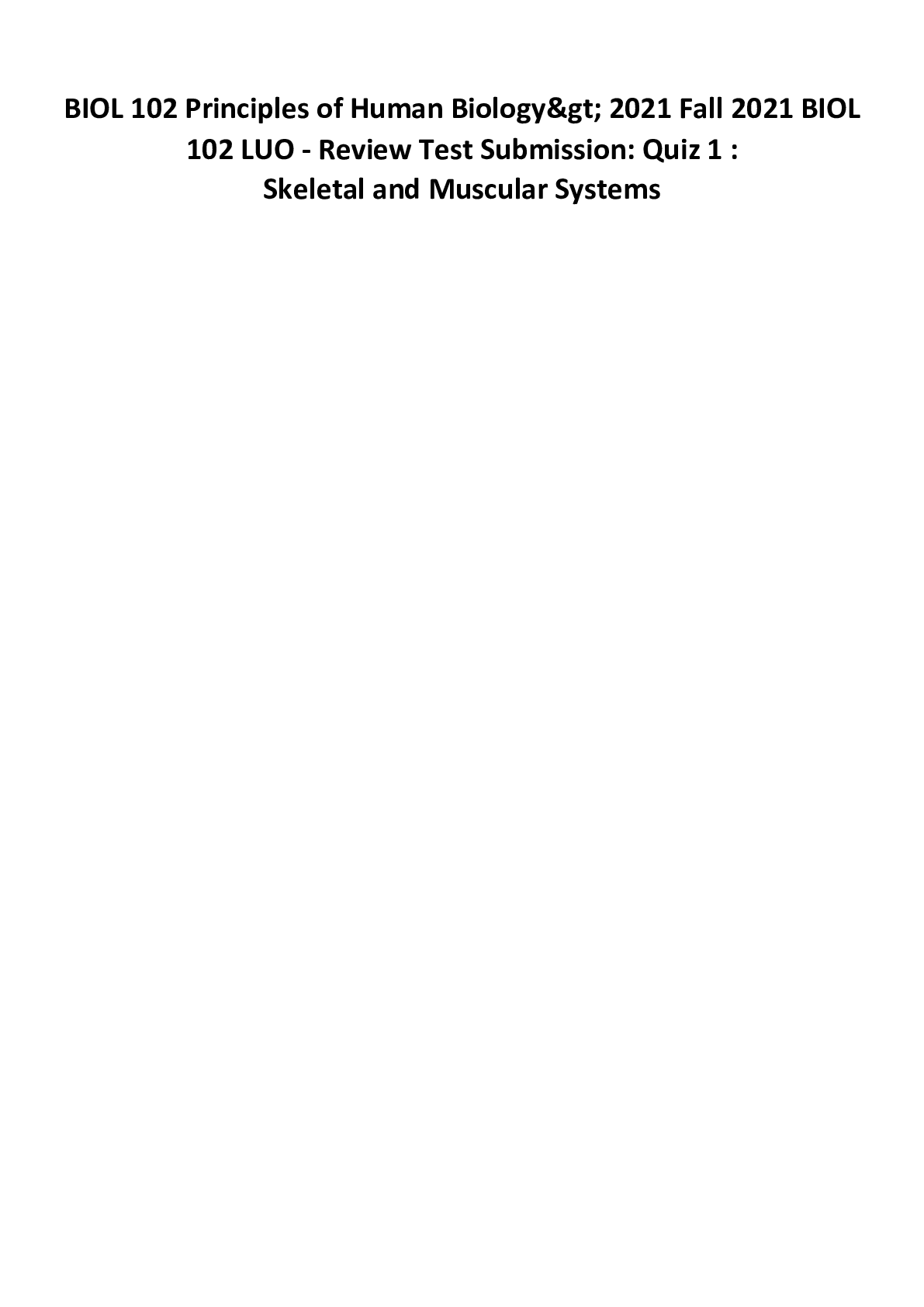
.png)

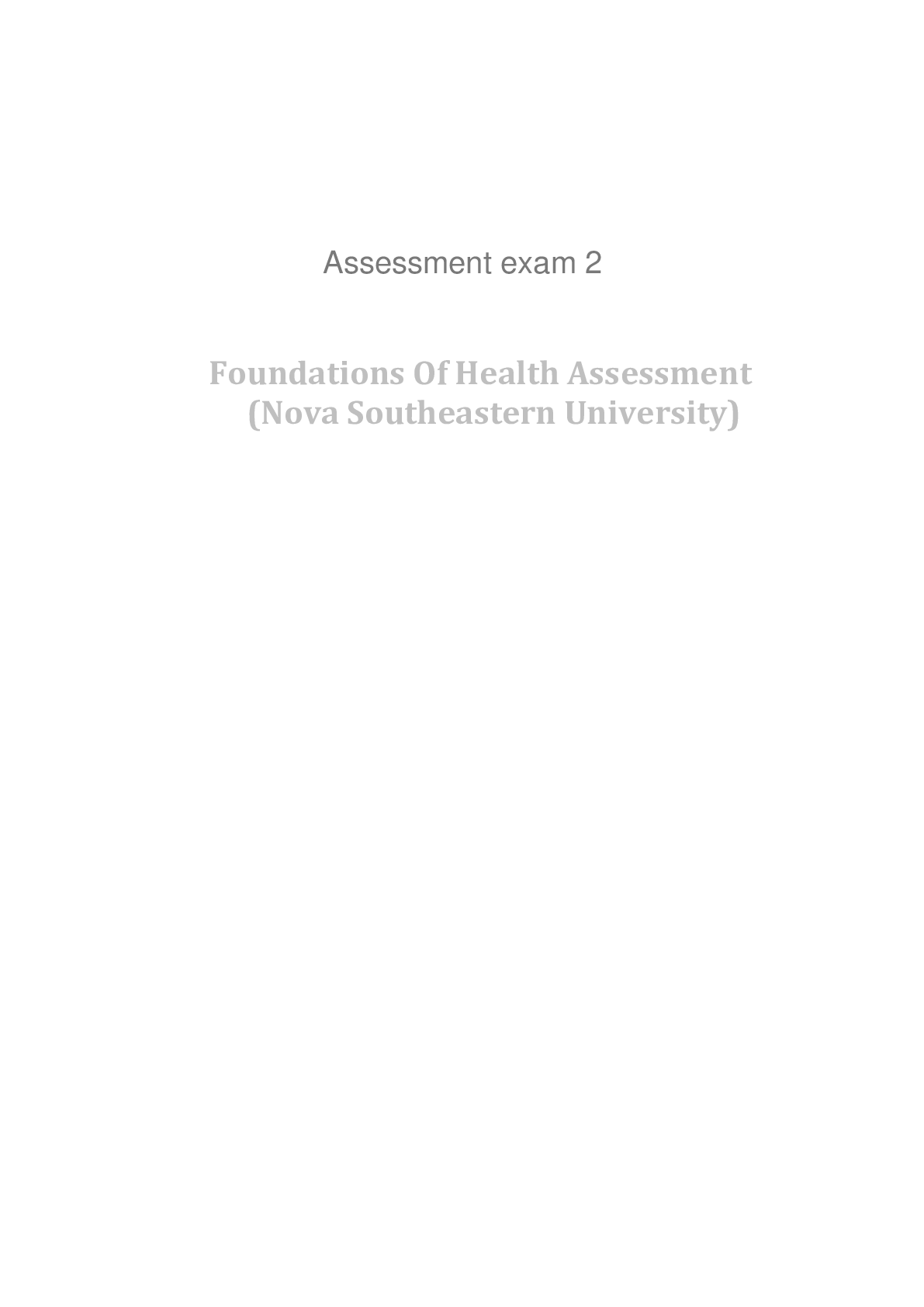
.png)
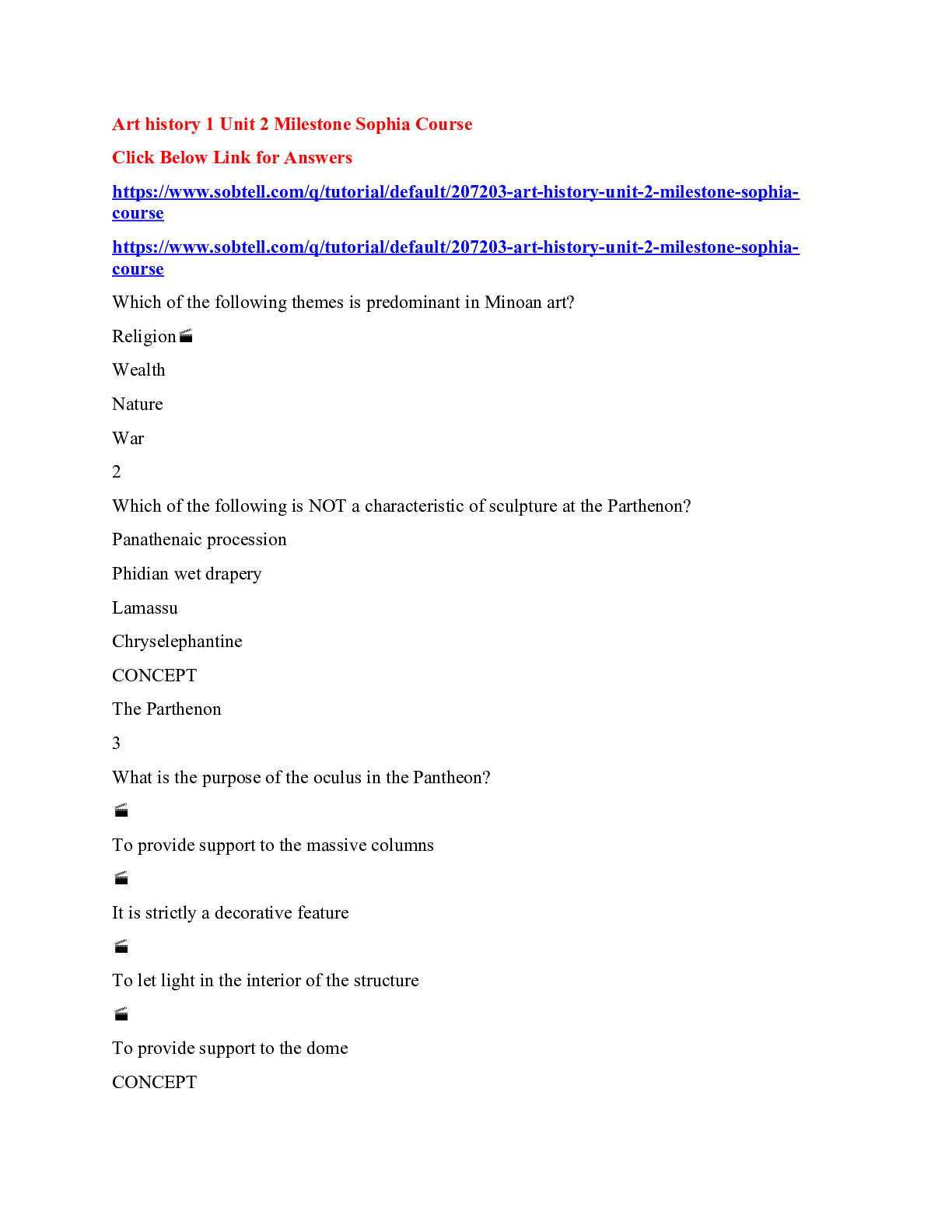




.png)
.png)


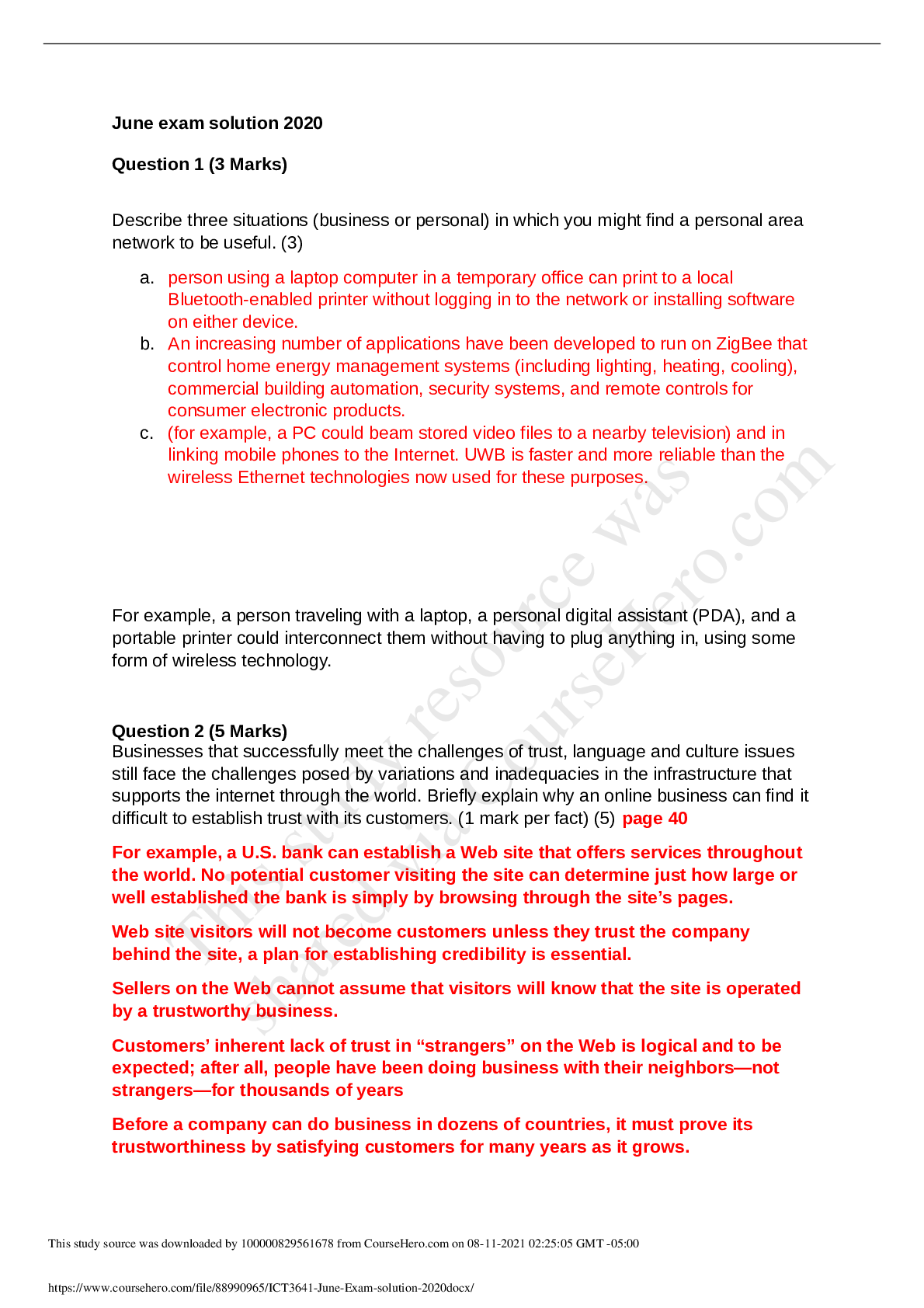
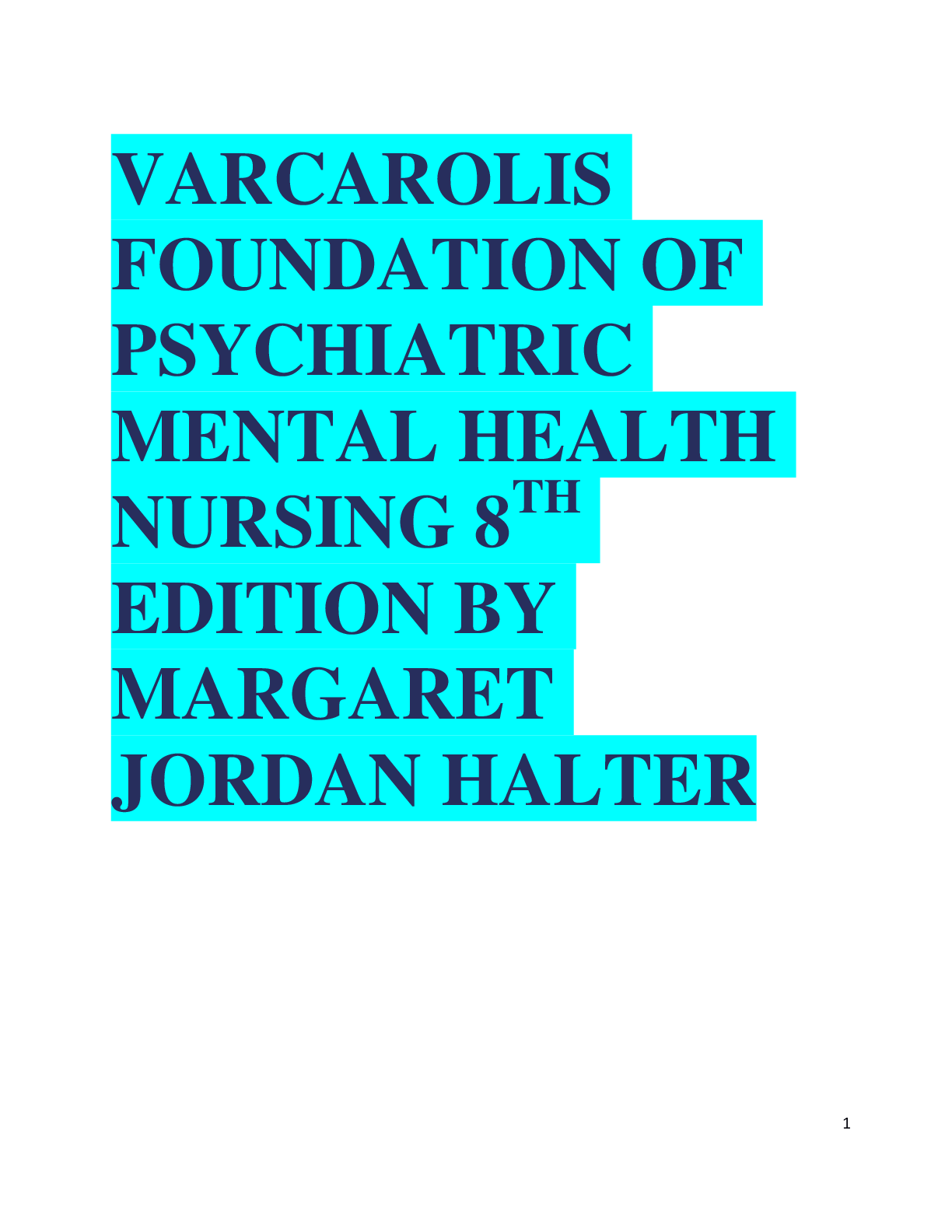

.png)
.png)
.png)
.png)
.png)
.png)
.png)
.png)
.png)
.png)
.png)
.png)
.png)
.png)
.png)
.png)

